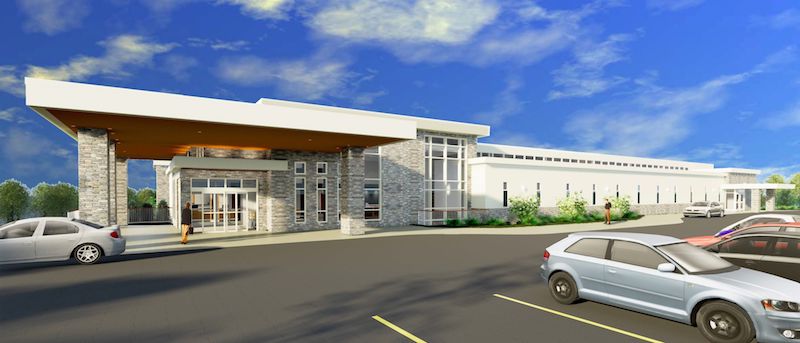The Orthopedic Associates of Hartford (OAH) recently announced plans for a 45,000-sf outpatient surgical center. Surgeons in the facility will perform shoulder, knee, and hip replacements; spine surgery; shoulder and knee arthroscopy; hand, wrist, elbow, foot, and ankle surgery; and interventional pain procedures to relieve pain and restore function.
The new center will replace the existing 15-year-old OAH surgical center. The new location is 40% larger and will allow surgeons to handle over 100 cases a day and, at capacity, up to 15,000 cases per year.
See Also: Outpatient clinics bring the VA closer to injured veterans
Designed by MBH ARCHITECTURE, the surgical center will include seven operating rooms and one procedure room. Each operating room is over 600 sf to accommodate the latest technology and robotic systems and to provide surgeons with more room to comfortably operate. These rooms feature the most advanced sterilization systems on the market. On the lower level there are approximately 25 rooms for doctors to see patients and a full service physical therapy center. Patients will have the ability to stay for up to 23 hours.
Floor-to-ceiling windows, stone walls, and soothing colors were used to increase patient comfort. Centria panels on the building’s exterior have built-in insulation and water drainage systems to help improve the building’s efficiency.
The facility is slated for a January 7, 2019 completion date with an official ribbon cutting ceremony in February.
Related Stories
Daylighting | Aug 18, 2022
Lisa Heschong on 'Thermal and Visual Delight in Architecture'
Lisa Heschong, FIES, discusses her books, "Thermal Delight in Architecture" and "Visual Delight in Architecture," with BD+C's Rob Cassidy.
| Aug 16, 2022
Cedars-Sinai Urgent Care Clinic’s high design for urgent care
The new Cedars-Sinai Los Feliz Urgent Care Clinic in Los Angeles plays against type, offering a stylized design to what are typically mundane, utilitarian buildings.
| Aug 15, 2022
IF you build it, will they come? The problem of staff respite in healthcare facilities
Architects and designers have long argued for the value of respite spaces in healthcare facilities.
AEC Tech | Aug 8, 2022
The technology balancing act
As our world reopens from COVID isolation, we are entering back into undefined territory – a form of hybrid existence.
| Aug 3, 2022
Designing learning environments to support the future of equitable health care
While the shortage of rural health care practitioners was a concern before the COVID-19 pandemic, the public health crisis has highlighted the importance of health equity in the United States and the desperate need for practitioners help meet the needs of patients in vulnerable rural communities.
Healthcare Facilities | Aug 1, 2022
New Phoenix VA outpatient clinic is one of the largest veteran care facilities in the U.S.
The new Phoenix 32nd Street VA Clinic, spanning roughly 275,000 sf over 15 acres, is one of the largest veteran care facilities in the U.S.
Building Team | Jul 12, 2022
10 resource reduction measures for more efficient and sustainable biopharma facilities
Resource reduction measures are solutions that can lead to lifecycle energy and cost savings for a favorable return on investment while simultaneously improving resiliency and promoting health and wellness in your facility.
Healthcare Facilities | Jun 22, 2022
Arizona State University’s Health Futures Center: A new home for medical tech innovation
In Phoenix, the Arizona State University (ASU) has constructed its Health Futures Center—expanding the school’s impact as a research institution emphasizing medical technology acceleration and innovation, entrepreneurship, and healthcare education.
Healthcare Facilities | Jun 20, 2022
Is telehealth finally mainstream?
After more than a century of development, telehealth has become a standard alternative for many types of care.
Codes and Standards | Jun 14, 2022
Hospitals’ fossil fuel use trending downward, but electricity use isn’t declining as much
The 2021 Hospital Energy and Water Benchmarking Survey by Grumman|Butkus Associates found that U.S. hospitals’ use of fossil fuels is declining since the inception of the annual survey 25 years ago, but electricity use is dipping more slowly.

















